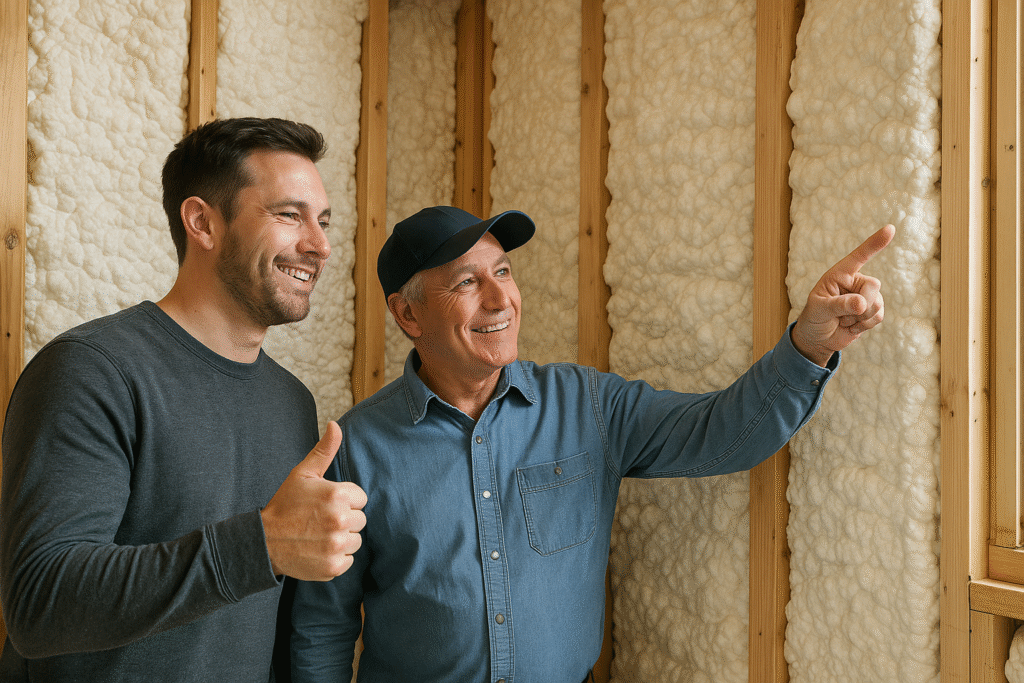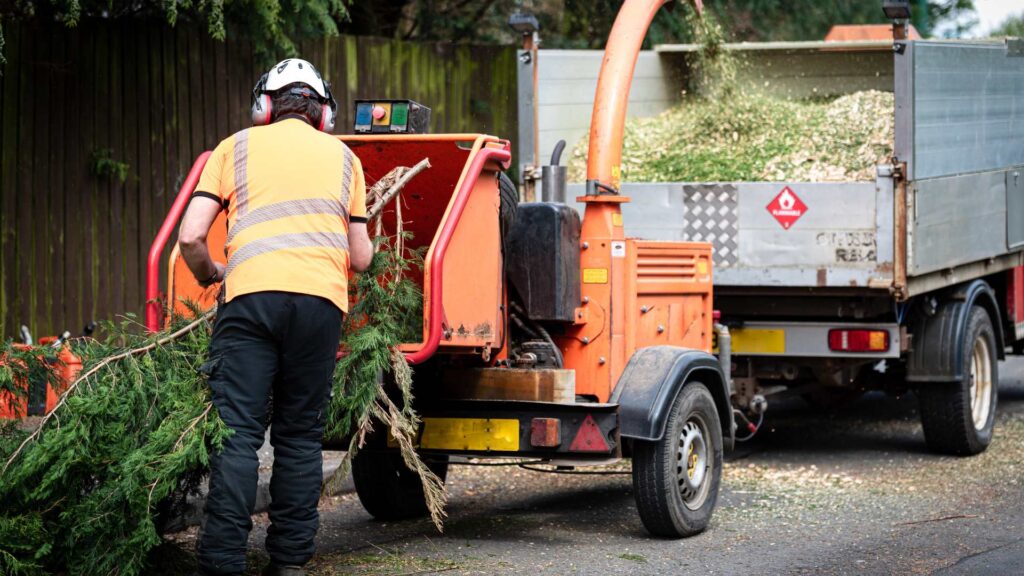When you think of particle colliders like the Compact Linear Collider (CLIC), your mind likely jumps to breakthroughs in physics, subatomic particles, or the quest to understand the origins of the universe. What likely doesn’t come to mind is home insulation.
Yet, as surprising as it may seem, the cutting-edge research and engineering behind collider technology are increasingly making their way into everyday applications—including how we insulate and energy-proof the buildings we live in.
In this post, we’ll explore how high-energy physics, particularly developments from the CLIC study, have created downstream innovations in material science, precision engineering, and thermal regulation—advancements that companies in entirely different industries, like residential insulation, are beginning to benefit from.
THE CLIC PROJECT: A HOTBED FOR MATERIAL INNOVATION
The Compact Linear Collider is one of the most ambitious scientific endeavors in the world. Designed to explore the deepest mysteries of the universe, CLIC aims to smash electrons and positrons together at unprecedented energy levels. Doing this requires immense precision—not only in particle acceleration, but in managing the physical systems around it.
To achieve this, researchers and engineers have had to push the boundaries of material durability, heat resistance, and thermal efficiency. These aren’t just “nice-to-haves” for the CLIC project—they are essential for ensuring safety, energy optimization, and performance at the atomic level.
As a result, the CLIC project has driven rapid innovation in materials that can withstand extreme conditions. These materials often exhibit exceptional thermal resistance, minimal conductivity, and high compressive strength—qualities that happen to be incredibly useful in more mundane applications like building insulation.

THE SURPRISING CROSSOVER: PARTICLE PHYSICS & SPRAY FOAM
You might be asking, “What do vacuum chambers and subatomic particles have to do with my attic insulation?” The answer lies in the trickle-down effect of advanced engineering.
Technologies developed for particle accelerators have a history of seeding innovations in seemingly unrelated industries. Just as NASA’s research gave us memory foam and cordless vacuums, particle physics research has led to breakthroughs in thermal insulation materials, some of which now form the basis of the most effective spray foam products available today.
Spray foam insulation, particularly high-performance polyurethane foams, increasingly incorporate chemical and structural innovations first tested in high-energy environments like colliders. Improved cellular structure, thermal barrier coatings, and nanocomposite materials used in CLIC components have inspired manufacturers to reengineer foam insulation to be more resilient, more efficient, and environmentally safer.
ENGINEERING PARALLELS: CONTAINING ENERGY, CONTROLLING LOSS
A key engineering challenge in particle colliders is energy containment. Whether it’s electromagnetic fields, beamline alignment, or thermal dissipation, precision control is everything. Interestingly, these same principles apply to managing energy within buildings—though at a far less intense scale.
At its core, insulation is energy containment. A well-insulated home manages the flow of heat energy to maintain temperature stability, minimize energy loss, and improve comfort—principles that overlap significantly with collider engineering, where every kilojoule matters.
Engineers working on home insulation today are leveraging insights from CLIC’s advanced thermal control systems. From vacuum-insulated panels to multi-layer reflective barriers, these technologies mirror those used to shield sensitive collider components from heat and interference. It’s no coincidence that the latest generation of spray foams now boasts superior R-values, higher density ratings, and longer life spans than ever before.
MATERIAL SCIENCE AT THE INTERSECTION
Material science has always been at the heart of innovation. CLIC’s contributions to this field—especially in high-performance polymers and thermoset resins—are increasingly crossing into consumer markets.
Take closed-cell spray foam, for example. Its tightly packed structure offers both insulation and structural support. The same kind of structural integrity is required for vacuum supports and beamline housings in the CLIC infrastructure. As engineers improved these materials for scientific use, it became clear they also had potential to redefine how we construct energy-efficient buildings.
Companies that stay on the cutting edge of these material innovations—like DenverSprayFoamInsulation.net—are helping to bring science-lab-grade performance into homes and businesses across the country. By using advanced formulations that trace their origins to collider-related material research, they offer insulation that is more effective, environmentally sustainable, and longer-lasting than traditional fiberglass or cellulose products.
SUSTAINABILITY: A SHARED GOAL ACROSS INDUSTRIES
Another area where these two seemingly disparate worlds intersect is sustainability. The CLIC project, like many modern scientific initiatives, is committed to energy efficiency and sustainable operations. Every aspect of the collider’s construction and maintenance is evaluated for its environmental impact.
Likewise, the building industry is undergoing its own transformation, with growing demand for sustainable materials and low-carbon construction practices. Advanced insulation plays a pivotal role in this shift. Improved spray foam products reduce energy consumption in homes and commercial buildings, leading to lower carbon footprints and reduced reliance on fossil fuels for heating and cooling.
As energy efficiency regulations tighten and consumers become more eco-conscious, insulation companies grounded in cutting-edge research will have a major advantage. Many of today’s highest-performing spray foams borrow techniques, formulations, or structural principles first proven in environments like those of the Compact Linear Collider.
HOW CROSS-DISCIPLINARY THINKING DRIVES PROGRESS
The real takeaway here isn’t just that CLIC is helping you stay warmer in winter—it’s that progress happens when ideas leap between disciplines.
High-energy physics researchers may not have set out to improve home energy efficiency, but their work has enabled new materials and methodologies that are doing exactly that. Likewise, insulation specialists may never step foot inside a particle lab, but they’re implementing the fruits of that labor every day.
This kind of cross-pollination is vital to global innovation. When engineers, physicists, and contractors draw inspiration from each other’s challenges and solutions, we get better buildings, better science, and a better world.
CONCLUSION: CONNECTING THE PARTICLES TO THE PLASTER
It may seem far-fetched that a billion-dollar particle collider could influence something as ordinary as home insulation—but that’s exactly the beauty of human ingenuity. When we invest in frontier technologies like the Compact Linear Collider, we’re not just pushing the boundaries of science—we’re laying the groundwork for real-world applications we may not yet even imagine.
As spray foam insulation continues to evolve, its performance, durability, and sustainability are increasingly shaped by the kinds of innovations born in high-tech environments like CLIC. Insulation companies are evidence that scientific breakthroughs don’t stay locked in laboratories—they filter into our homes, businesses, and everyday lives, often in the most unexpected ways.
Because in science, as in construction, it’s all about building better foundations—for energy, for knowledge, and for the future.






 It has now become clear that the multi-TEV range has new energy level that needs to be studied and exploited for the benefit of the human race. Unfortunately the information available about the regions is insufficient and cannot be relied to exploit the energy. This is why Compact Linear Collider is important because it is believed that it could provide some insight and shed light on the energy levels. CLIC is therefore a study for a future electron-position collider that would allow physicists to explore a new energy region in the multi TeV range beyond the capabilities of today’s particle accelerators.
It has now become clear that the multi-TEV range has new energy level that needs to be studied and exploited for the benefit of the human race. Unfortunately the information available about the regions is insufficient and cannot be relied to exploit the energy. This is why Compact Linear Collider is important because it is believed that it could provide some insight and shed light on the energy levels. CLIC is therefore a study for a future electron-position collider that would allow physicists to explore a new energy region in the multi TeV range beyond the capabilities of today’s particle accelerators. Further the discovery of Higgs boson and the absence of the phenomena beyond the standard model in collisions up to 8TeV have resulted into a major interest in future colliders which are meant to push energy precision frontiers. The future energy frontier collider at 100TeV has made it possible to reach to territories that were unknown. This is new physics that can be used to explain observations like the prevalence of matter over non-zero masses and antimatter.
Further the discovery of Higgs boson and the absence of the phenomena beyond the standard model in collisions up to 8TeV have resulted into a major interest in future colliders which are meant to push energy precision frontiers. The future energy frontier collider at 100TeV has made it possible to reach to territories that were unknown. This is new physics that can be used to explain observations like the prevalence of matter over non-zero masses and antimatter.